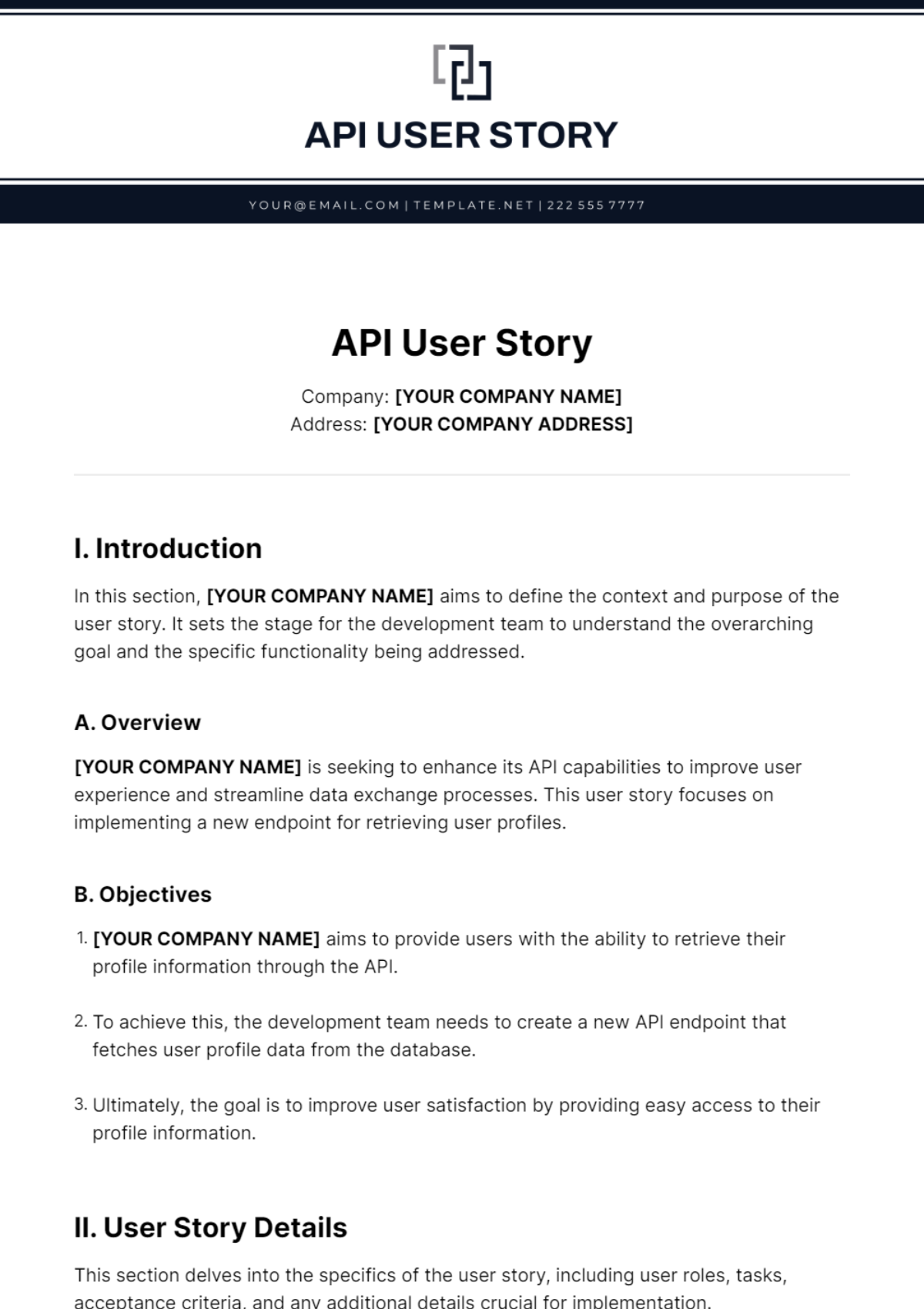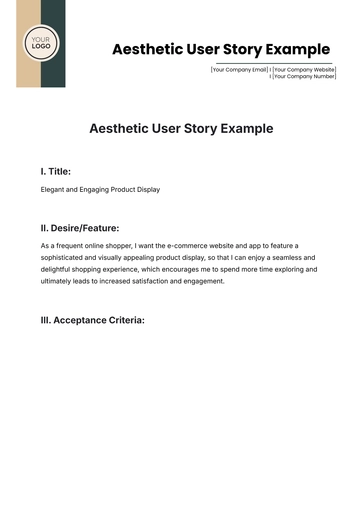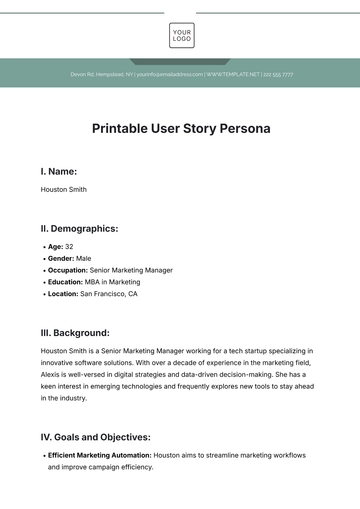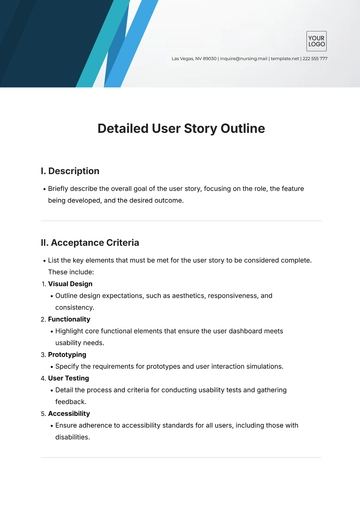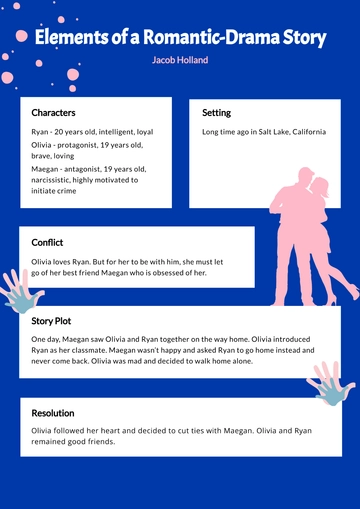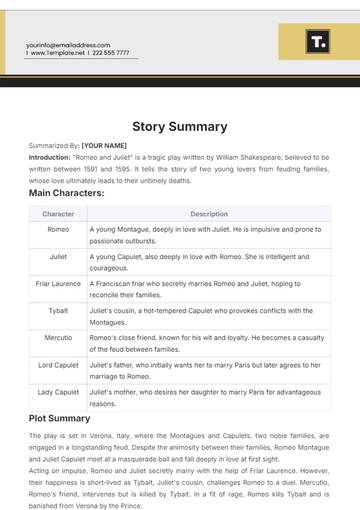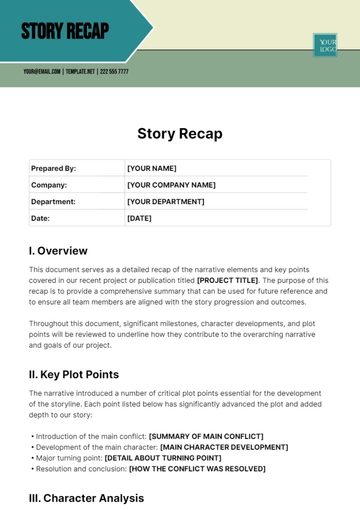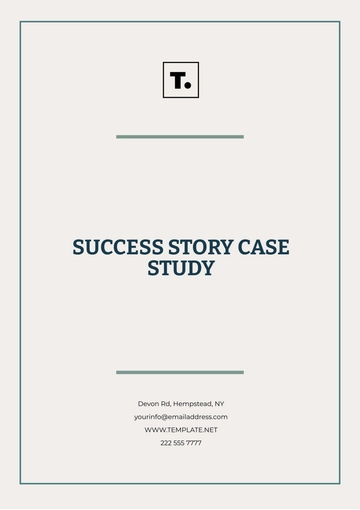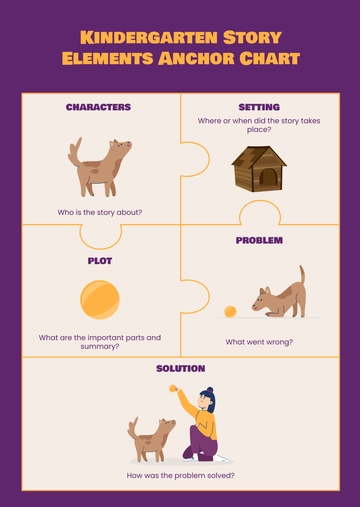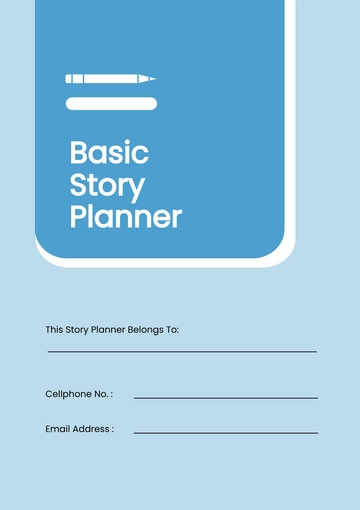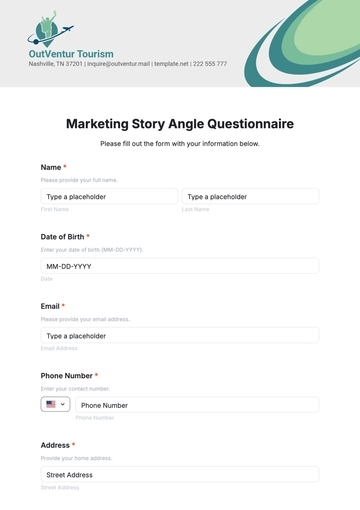API User Story
Company: [YOUR COMPANY NAME]
Address: [YOUR COMPANY ADDRESS]
I. Introduction
In this section, [YOUR COMPANY NAME] aims to define the context and purpose of the user story. It sets the stage for the development team to understand the overarching goal and the specific functionality being addressed.
A. Overview
[YOUR COMPANY NAME] is seeking to enhance its API capabilities to improve user experience and streamline data exchange processes. This user story focuses on implementing a new endpoint for retrieving user profiles.
B. Objectives
[YOUR COMPANY NAME] aims to provide users with the ability to retrieve their profile information through the API.
To achieve this, the development team needs to create a new API endpoint that fetches user profile data from the database.
Ultimately, the goal is to improve user satisfaction by providing easy access to their profile information.
II. User Story Details
This section delves into the specifics of the user story, including user roles, tasks, acceptance criteria, and any additional details crucial for implementation.
A. User Role
As a registered user, I want to be able to retrieve my profile information through the API so that I can view and update my details.
B. User Task
Registered users should be able to send a GET request to '/api/profile' with their authentication token to retrieve their profile information.
C. Acceptance Criteria
Criteria | Description |
|---|
1 | The API endpoint '/api/profile' returns a 200 OK response with the user's profile information in JSON format. |
2 | The endpoint requires a valid authentication token in the request header. |
3 | The response includes the user's name, email, and any other relevant profile details. |
D. Additional Details
The API should handle errors gracefully and return appropriate error messages if the request is invalid or unauthorized.
The user's password should not be included in the profile information returned by the API.
III. Tasks Breakdown
A. Task 1: Implement API Endpoint
Description: Create a new API endpoint '/api/profile' that retrieves the user's profile information from the database.
Assigned To: [ASSIGNED PERSON'S NAME]
Estimated Effort: 8 hours.
B. Task 2: Authentication Handling
Description: Implement authentication logic to ensure that only authenticated users can access the profile endpoint.
Assigned To: [ASSIGNED PERSON'S NAME]
Estimated Effort: 4 hours.
IV. Dependencies
V. Testing
A. Test Scenarios
Scenario 1: Send a GET request to '/api/profile' with a valid authentication token and verify that the response includes the user's profile information.
Scenario 2: Send a GET request to '/api/profile' without an authentication token and verify that the response is a 401 Unauthorized error.
B. Test Data
Use mock user data and authentication tokens for testing.
C. Acceptance Testing
The QA team will conduct acceptance testing to ensure that the API endpoint meets the acceptance criteria.
VI. Documentation
The API endpoint '/api/profile' should be documented in the API documentation to guide users on how to use it. The documentation should include:
Endpoint URL: '/api/profile'
Request method: 'GET'
Authentication: Requires a valid authentication token in the request header.
Response format: JSON
Response fields: User's name, email, and any other relevant profile details.
By documenting the API endpoint, [YOUR COMPANY NAME] ensures that developers and users understand how to interact with the endpoint correctly, enhancing the overall user experience.
User Story Templates @ Template.net
